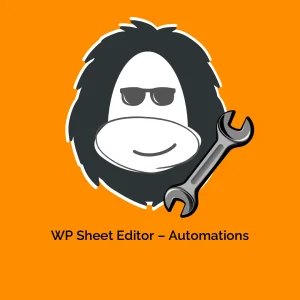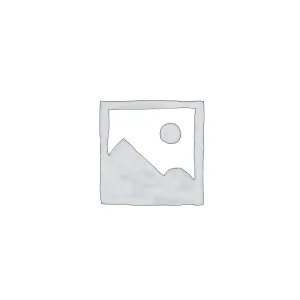Mastering Multi Domains for Multisite Setup
Discover how to effectively implement multi domains for multisite on your WordPress network without the need for any plugins. This detailed guide will explore essential steps to achieve domain mapping and enhance your site’s functionality.
WordPress Multisite enables users to manage multiple websites from a singular network, but there remains a robust interest in giving each subsite its own unique domain. This is where multi domains for multisite come into play. By assigning distinct domain names to each subsite, you maintain the managerial benefits of a unified backend, while your visitors interact with each subsite under a customized domain.
Understanding Multi Domains for Multisite
Multi domains for multisite allow individual subsites of a WordPress Multisite network to operate under their own domains, deviating from the default configurations of subdomains or subdirectories. By default, WordPress might structure subsites under either:
– Subdomains: like subsite1.network.com
– Subdirectories: like network.com/subsite1
When activating multisite capabilities, you can choose between these configurations, but that choice is not reversible later on. While subdomains or subdirectories can work for many applications, providing unique domains for various sites can significantly benefit businesses and brands that demand a stronger online presence.
Imagine you are managing a sizable organization where different products or services are represented through separate subsites. Here, multi domains for multisite not only reinforce individual branding but also enhance the marketing outreach for each product offering. For instance, a corporation like Apple could operate subsites for various products like iPhone, iPad, and MacBook under domains such as iphone.com, ipad.com, and macbook.com.
Advantages of Embracing Multi Domains for Multisite
Utilizing multi domains for multisite can provide numerous benefits:
– Unique Branding: Each subsite can have a domain that better reflects its purpose or service, leading to improved customer recognition and resonance.
– SEO Benefits: Custom domains can enhance SEO efforts, making it easier for users to find and distinguish each subsite based on their specific search intent.
– Simplified User Experience: For users seeking specific services or products, having distinct domains allows for a straightforward navigation experience, plus it helps in building authority for each subsite.
– Flexible Management: Managing multiple domains from a single WordPress installation offers ease of control while still providing the flexibility needed for individual subsites.
Given these advantages, it is worth taking the steps necessary to fully implement multi domains for multisite capabilities on your WordPress network.
Step-by-Step Process for Multi Domains for Multisite
Let’s walk through the essential steps needed to configure your WordPress Multisite network to support multi domains.
Step 1: Establishing a WordPress Multisite Network
To start, ensure that you have a functioning WordPress installation and then enable the multisite feature. Here’s a simplified overview of the setup:
– Install WordPress as you normally would.
– Edit your wp-config.php file to activate multisite functions.
– Navigate to Tools > Network Setup in your WordPress dashboard. Here, decide on the subdomain or subdirectory configuration.
– Finish the setup by adding two code snippets to your wp-config.php and modifying the .htaccess file as per the instructions.
This process sets the groundwork for linking multiple domains to your multisite.
Step 2: Configure DNS Records for Each Domain
Next, each custom domain must be set up to point correctly to your hosting server. This typically involves:
– Accessing your DNS settings at your domain registrar to make necessary adjustments.
– Setting A records to direct the domain to your server’s IP address.
– Using CNAME records, if necessary, to manage subdomains effectively.
While your hosting provider may automatically configure DNS settings for you, it’s beneficial to review and ensure everything functions properly.
Step 3: Adding Custom Domains to Your Hosting Account
Adding new domains to your hosting is crucial for their functionality. This can usually be accomplished through:
– cPanel: Look for the option to create an alias or parked domains in the domains section. Follow the prompts to add your custom domain.
– Managed Hosting Solutions: If you’re using specialized hosting platforms like WPMU DEV, the process is much simpler. Just navigate to the domains tab, enter the custom domain, and the system manages the rest including SSL certification.
Step 4: Mapping Subsites to Their Custom Domains
The core of linking multi domains for multisite lies in mapping each subsite to its corresponding domain:
– Access your Network Admin dashboard.
– Locate the site within the Sites panel that you wish to map to a new domain. Click Edit to enter the custom domain into the Site Address (URL) field.
– Save your changes, and now that subsite will respond to the specified domain, providing seamless accessibility for users.
Step 5: Act on Additional Subsites
If your multisite network supports multiple subsites, repeat the previous step for each one to ensure every subsite operates under its own unique domain. This process allows for streamlined management of all your sites under one umbrella.
Ensuring Security with SSL Certificates
Implementing SSL certs for your primary network domain and all mapped domains is paramount for security and SEO best practices. This ensures your sites are not only secure for user interaction, but it also enhances your search engine positioning as sites with SSL are preferred by Google.
Most managed hosting providers will automatically include SSL certification for additional domains once they resolve correctly to your hosting IP. If you are on a standard shared hosting solution, verify with your provider about adding SSL for all your unique domains.
Troubleshooting Subsite Login Issues
An occasional hurdle multisite network admins encounter is login errors for subsites. Typically, this is associated with cookie blocking settings in browsers. An easy remedy involves adding the following code to your wp-config.php file:
php
define('COOKIE_DOMAIN', $_SERVER['HTTP_HOST']);
This modification usually resolves login troubles and ensures smooth interoperability within the network.
Incorporating multi domains for multisite can revolutionize how you manage your websites. Each subsite can flourish under its own unique brand identity while benefiting from the backend simplicity that a multisite configuration affords. By leveraging the advantages of multi domains, you can craft a more robust online presence for distinct projects or clients, leading to greater overall success.
Enabling a multisite network with mapped custom domains not only aids user experience but also strengthens your brand’s comprehensive outreach. Transitioning to the multi domains for multisite approach is straightforward. With modern WordPress updates simplifying the process and minimizing reliance on plugins, this setup is within reach for any WordPress admin prepared to enhance their web portfolio.
Multi-Domains for Multisite: Download for Free on OrangoGPL
That’s right, downloading Multi-Domains for Multisite for Free on OrangoGPL is entirely viable and legal.
Truly, even downloading a cracked Multi-Domains for Multisite is law-abiding, as the license it is distributed under is the General Public License, and this license allows the holder its resale.
So, you can be at ease: If you were in search of to buy Multi-Domains for Multisite cheaply or, directly, to download Multi-Domains for Multisite Plugins nulled to get it completely free,, you can do that legitimately.
Multi-Domains for Multisite GPL: The only choice for startup entrepreneurs
Call it as you prefer: Multi-Domains for Multisite deals, download Multi-Domains for Multisite Plugins GPL, download Multi-Domains for Multisite without license or download Multi-Domains for Multisite Plugins cracked.
It is something 100% law-abiding and a necessity for any entrepreneur beginning their journey.





Reviews
There are no reviews yet.